Staying up to speed with supply chain knowledge is a bit like measuring the height of a sand dune. Things change so fast that what’s true today might be an unwise assumption on which to base next month’s plans.
Bringing relevant knowledge into your organisation, retaining it, and updating it are essential requirements; since supply chain knowledge gaps can limit your ability to compete, and can even expose your business to costly financial and operational performance shortfalls.
The first step in closing critical supply chain knowledge gaps is to know which ones are most likely to handicap performance. That’s why in this post I’m highlighting seven of the supply chain knowledge gaps that can be most costly, and which deserve prioritisation in terms of executive, management, and staff development and education.
Urgent: The 7 Supply Chain Knowledge Gaps You Need To Address
1. Supply Chain Benchmarking: Knowing Which Way is Up
Gaps in benchmarking knowledge can easily lead to the wrong approach being taken, prompting mistakes which not only limit improvement, but can actually be detrimental, resulting in higher than necessary supply chain costs and misplaced improvement efforts.
If your company lacks sufficient benchmarking knowledge, it’s really possible to do more harm than good by taking on a benchmarking exercise. Potential errors include:
- Drawing the wrong supply chain performance and cost conclusions
- Making comparisons with the wrong peer organisations
- Comparing the wrong performance areas
- Setting irrelevant or unnecessary objectives
- Choosing inappropriate performance measurements
All of these errors can point improvement efforts in the wrong direction, costing money instead of saving, and putting you at a disadvantage against your competitors.
On the other hand, companies which fully understand benchmarking and use it to lift performance to best-in-class standards, are able to operate at half the cost of those which don’t benchmark effectively.
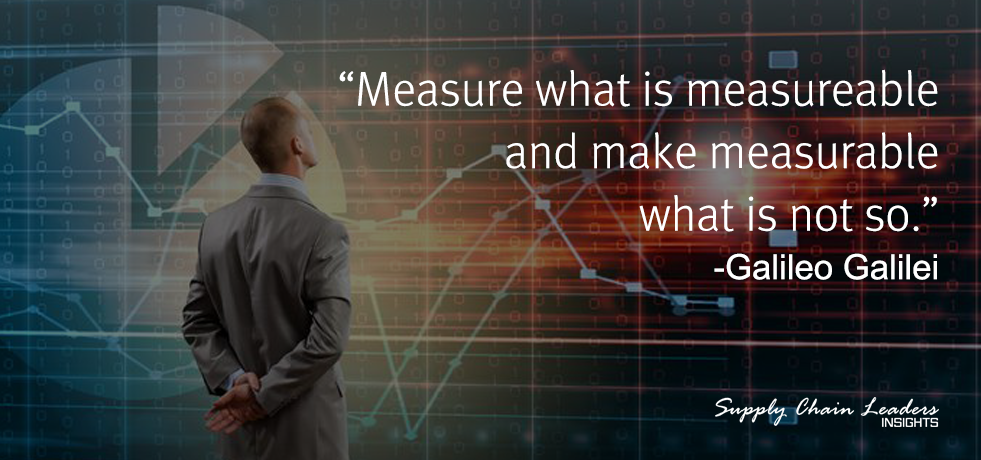
With the right benchmarking knowledge, you can gather highly accurate, granular data about your supply chain, answering questions important to successful supply chain strategy—questions such as:
- How can the economic impact of our supply chain be improved?
- Are we competing successfully on cost performance?
- What operational characteristics must we strengthen to become best-in-class?
- What must we measure to improve performance and how should we measure it?
- How can we work more effectively with suppliers and partners?
When you can properly benchmark performance and answer questions like these, your managers can make more informed decisions in areas such as customer service, financial performance, outsourcing opportunities, network optimisation, security and risk management, and technology utilisation, to name but a few.
2. Supply Chain Strategy: Knowing How to Drive It
Depending on which set of statistics you study, somewhere between 60 and 80% of companies have no documented supply chain strategy—really!
However, the picture is even worse when you start to look at it more closely. Many of the companies which do have documented, multi-year supply chain strategies fail to integrate and align them with the broader business strategy. That’s a huge mistake and one which can only be made as a result of insufficient knowledge, unless you consider the (highly unlikely) possibility of deliberate sabotage.
Misalignment of supply chain strategy is an issue commonly seen by Logistics Bureau consultants when we’re engaged to help customers improve performance. The problem is not so much a lack of knowledge about the need for strategy, but of the need to link it to the business vision and mission.
We often see supply chain strategies centred upon adherence to certain best practices or tracking popular trends. Instead, the focus should be on developing plans which support what the business, or more importantly, what the business’ customers want.
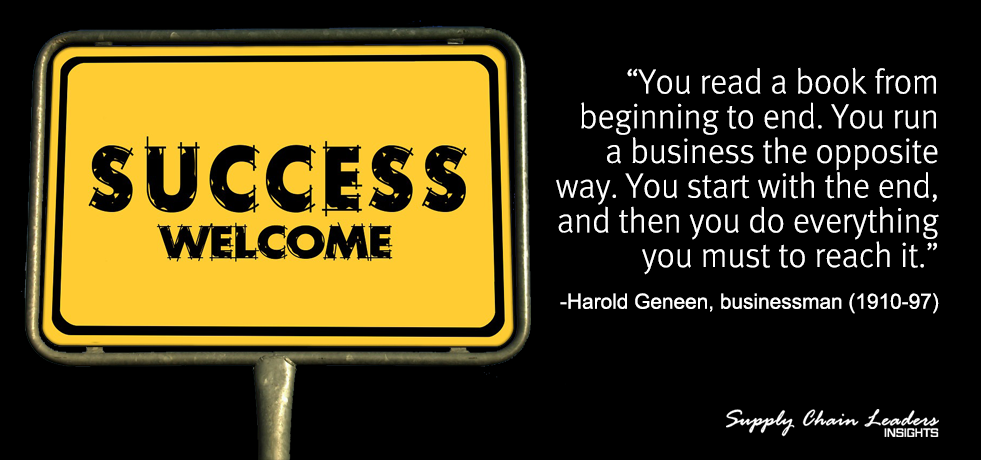
Other common pitfalls in strategy development (which can be avoided by knowledge acquisition and application), include:
- Overestimating the capabilities of systems and staff
- Failing to gain buy-in and support from senior business executives
- Inadequate change management during strategy implementation
- Poor or inadequate communication relating to new or changed strategy
With the necessary knowledge to avoid pitfalls and develop an effective, aligned, integrated supply chain strategy, your organisation can benefit from reduced business costs, elevated customer service levels, and increased profitability—all of which should be strong incentives to close knowledge gaps and improve competency in strategy development and implementation.
3. Outsourcing: Knowing When, Why and How to Do it Right
Knowledge acquisition is a fundamental element of outsourcing preparation. Partnering with an external 3PL or manufacturer is not a “learn as you go” venture. Once an outsourcing agreement is enacted, the emergence of previously undiscovered and unpalatable facts will be a hindrance at best. At worst, it can be the beginning of a slow and expensive process of extraction, replete with the complications of a return to in-house operation or transference to a new third party provider.
Outsourcing knowledge gaps have led plenty of companies to make the following common mistakes:
- Poor preparation and planning of the vendor selection process
- Poor execution of vendor selection, resulting in unproductive and even fractious partnerships
- Failure to understand rate structures, leading to financial results falling far short of projections
- Failing to establish why a process should be outsourced (for cost reduction, service improvement, asset reduction, quality enhancement, agility?)
These mistakes are all real, as unbelievable as some of them might sound, and they have all contributed to unsatisfactory outsourcing results.
Something like 80% of companies (which rely on supply chains) outsource logistics activities and of those (according to a recent study by Capgemini Consulting), shrinking but still significant percentage report dissatisfaction with their third-party logistics partnerships:
- 7% of companies that outsource say their partnerships do not yield any positive results
- 30% say that outsourcing is not delivering logistics cost reductions
- 17% say that outsourcing has not contributed to customer service improvement
So what can be deduced from these numbers? With the vast majority of companies using of third-party logistics providers, and most of those reporting success, there is clearly a strong case for the benefits of outsourcing.
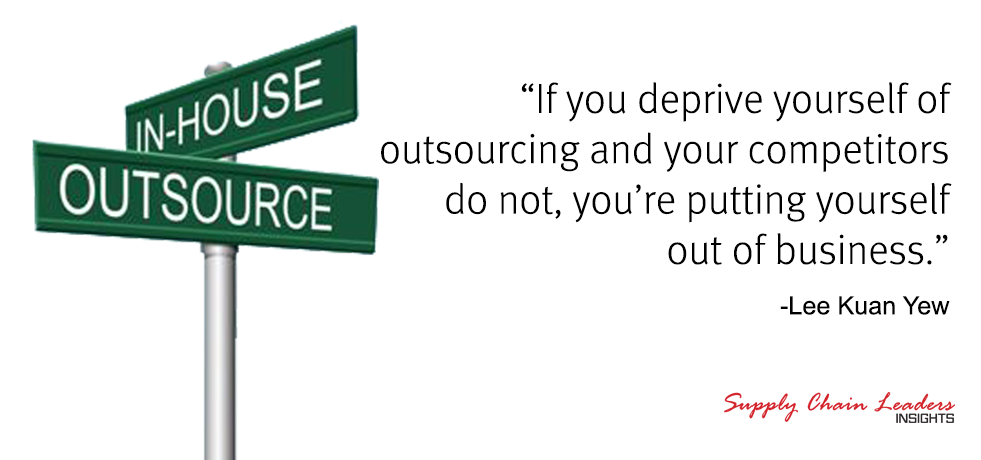
However, 7% of a global total are somehow getting it wrong. You don’t need to be a mathematician to work out that this amounts to quite a lot of companies, a number in which you surely don’t want your organisation to fall. That then, should be a strong enough case for bridging knowledge gaps before deciding to outsource.
4. Sales and Operations Planning: How to Balance Supply and Demand
Sales and operations planning (sometimes called integrated business planning or IBP) is nothing new. It’s a process that has evolved over more than three decades. So why is it that only 40% of companies asked about S&OP believes they practice it successfully?
Like the other supply chain elements covered in this post, the answer lays in knowledge, or rather the gaps in that knowledge which if bridged, would lead many of those companies to improve their sales and operations planning.
A well-run S&OP process is proven to be instrumental in driving the following supply chain performance factors:
- Inventory investment
- Customer service levels
- Inventory obsolescence
- Inventory turns.
- Supply chain agility and flexibility.
- Forecast and demand planning accuracy
- Inventory deployment
If, on the other hand your company lacks the knowledge for effective S&OP, you’ll almost certainly be incurring inventory costs higher than necessary, suffering exposure to unknown supply chain risks, and missing out on opportunities to differentiate through service initiatives.
To put it bluntly, money will be leaking from your organisation like water through a colander. That’s something which companies of yesteryear had to live with—but not something yours should have to, given what’s known today about effective sales and operations planning.

The following simple tips should be helpful if you are planning to implement S&OP in your organisation for the first time, or if you are trying to rekindle the spark in a flagging program:
- Secure executive support: Get senior function leaders talking the S&OP talk and walking the walk.
- Build a common calendar: Timing plays an important part in successful S&OP, so start by putting together a planning calendar which is agreed and adhered to by all business functions.
- Start simple: Sales and operations planning can get complex, so begin by getting a basic process under way, with a focus on forecasting, and the application of some rules to link dependent elements.
- Manage the change: Expect a timescale of up to 12 months, perhaps more, before your S&OP process develops into a steady rhythm. Tuning the process will involve incremental changes or adjustments and people will sometimes feel they are running to stand still. Proactive management of the change will help to ensure your program doesn’t run out of steam before it starts proper.
- Monitor, measure, refine and improve: S&OP is actually an ideal subject for practising continuous improvement. Monitor and measure actual performance against the plan, assess the performance gaps and tweak things to improve. To help ensure continuous improvement, incorporate a process review into the monthly S&OP meetings.
5. Legal Contracts: Knowing the Need for Formality
There was a time when you had to be a major force in industry or commerce to consider the risk and worry of a global supply chain. If your company played on a global field, you likely had an entire legal department dealing with the contracts and agreements necessary to manage the financial/legal implications of working with multiple partners.
Today everything has changed: the popularity and relative ease of outsourcing, off-shoring trends, the Internet, globalisation … they’ve all altered the way in which business is conducted and made it possible—often necessary in fact—even for SMEs to participate in worldwide supply and demand networks.
As a result, companies which don’t have the luxury of in-house legal counsel often enter into agreements which, without sufficient knowledge, can expose them to risks and liabilities. The issues are compounded by the global nature of business, which requires knowledge of how contracts and agreements work in countries other than one’s own.
In this environment, a gentleman’s agreement, based on some verbal promises and a handshake, protects nobody, and even a written contract, if not correctly structured and containing sufficient detail, might not mean peace of mind is guaranteed. Yet supply chain partners are being connected by such inadequate pacts, with unwary leaders sometimes finding their companies in trouble as a result.
It would take a very long and intricately researched article, itself vetted thoroughly by legal counsel, to set out even the basics of contract negotiation and drafting. Suffice to say here then, that you should always take the necessary legal advice and use the services of professionals to examine potential agreements and to draft them—and you should do so for any such agreement with the remotest chance of exposing your company to risks or liabilities.
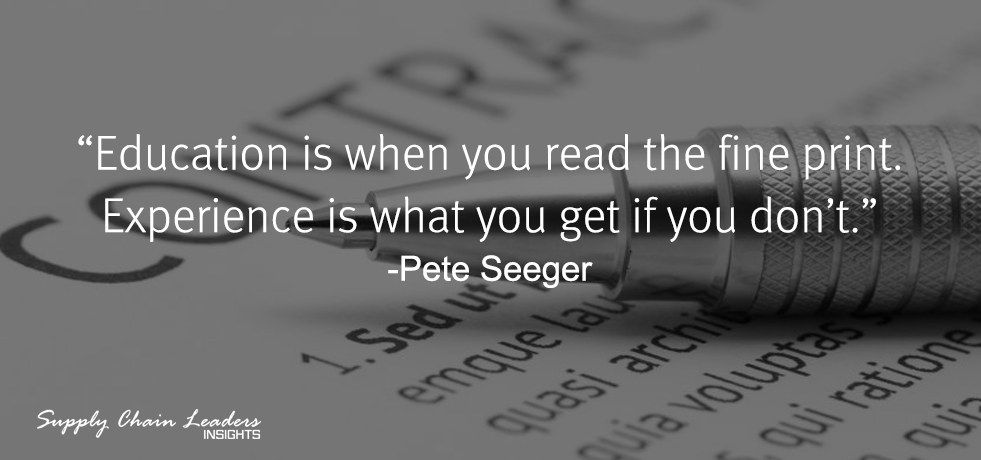
6. Business Information and Management Systems
In terms of knowledge acquisition, IT can be something of a circular conundrum. There is knowledge about systems, and then there is the knowledge to be gained from those systems.
For instance, if your company has knowledge gaps about what systems can do and how best to invest in IT, then it’s probably missing out on the operational knowledge that the right systems can provide. It’s a case of knowledge gaps begetting knowledge gaps. That can be a costly cycle given the huge benefits that well-chosen supply chain IT solutions can deliver.
As an example, let’s explore the value of optimisation; something which only digital technology can deliver economically. Budget allowing, your company has a wide range of supply chain-related optimisation tools from which to choose. Applications are available to optimise activities such as:
- Demand planning and sales forecasting
- Transportation routing and scheduling
- Warehouse operations
- Supply chain network design
- Warehouse design and layout
- Vehicle loads, routes and schedules
- Labour and asset deployment
The above list is merely a sample of the applications used to optimise supply chain activity, but what they all have in common is that they can perform the work of an expert team in a fraction of the time it would take to do manually. Not only that, they will almost certainly make a better job of it.
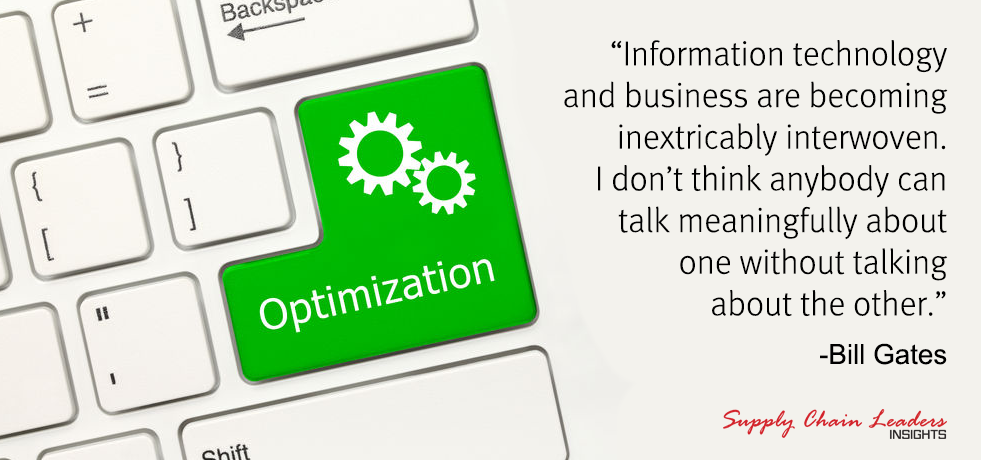
Computers are better than humans at optimisation, period. That’s because true optimisation involves millions of calculations, of millions of data points, with millions of minor variations to arrive at the best possible result (in accordance with the criteria that define something as being “the best”).
Computer technology excels in performing such calculations in moments, a reality which can dramatically transform your operation; not only in terms of what is being optimised, but also in the way you use management and administration resources.
The simple message here is this: By closing IT knowledge gaps and knowing which systems offer the most meaningful gains for your operation, you may well save more money, make greater performance improvements, and create more opportunities than any other form of initiative you might undertake.
Before moving on, there are a couple of small caveats to that last statement which should be mentioned: 1: You need to have the knowledge and resources to ensure successful implementation of any solution you invest in and 2: You must know how to gather and process the right data, of the right quality, before you can expect decent optimisation outcomes. So these are areas in which you should also seek to minimise knowledge gaps if you want to get the best from IT in your supply chain.
7. Training, Development, Education and Knowledge Acquisition
All of the six areas covered so far are those in which companies often lack knowledge. Most of the reasons for knowledge gaps can be assumed, without the need for extensive analysis.
Consider your own organisation for a moment. If you don’t suffer at least a little from supply chain knowledge gaps, I would be extremely surprised. So why do those knowledge gaps exist? It can be assumed that:
1. You don’t care about knowledge in certain supply chain components or activities.
2. You don’t believe that there’s any benefit in knowing more about those components or activities.
Neither of the above assumptions is likely to be true. If they were, your organisation would probably already be out of business. It’s far more likely that one or more of the following assumptions are correct:
3. You weren’t aware of the importance of knowledge in certain components or activities.
4. You hadn’t identified the existence of knowledge gaps or where they lie.
5. You don’t know how or where to acquire the knowledge.
6. You don’t have the people, time, or resources to focus on bridging knowledge gaps.
7. You know the knowledge gaps exist, but have simply not been able to prioritise and address them yet.
Assumptions 6 and 7 are resource issues and probably don’t apply to you or your organisation, or you would not have read all the way to this point in the post (since you know the most common supply chain knowledge gaps and would rather focus on how to fill them). However, if they do apply, please stick around a little longer to learn about one way to gather knowledge without over-stretching your resources.
This leaves assumptions 3, 4, and 5; all knowledge gaps in themselves—and costly ones at that. Your company will become better at reducing costs, improving performance, and generating profit if it can eliminate supply chain knowledge gaps and successfully apply the knowledge gained.

To do that, you need to maintain a strong focus on education, development, training and knowledge acquisition within your organisation, since to return to the introductory comments I made at the beginning of this post, things change fast in the supply chain world.
Keep Ahead of the Knowledge Curve
What might have been up-to-date knowledge six months ago, is probably behind the curve today. In order to get ahead, you might consider the following ways to keep supply chain knowledge up to date in your organisation:
- Engage the services of supply chain consultants and/or education providers
- Use online resources to propagate the latest information across your business
- Sponsor attendance at supply chain exhibitions, events, and conferences
- Use briefings, newsletters and bulletins
Whatever your company’s training and development budget, there are ways and means to bridge knowledge gaps and keep your executives, managers, and staff up to date with the intelligence to compete at the highest level.
For example, how about filling knowledge gaps in all seven areas covered by this article, all at a single event, by gaining direct access to experts at the very bleeding edge of supply chain management and operation?
At our nominal price of admittance, your budget should stand the attendance of yourself and/or any number of your key people to the Supply Chain Leaders Insights event, a unique, one-day knowledge-sharing program, where experts from across the supply chain spectrum provide the practical guidance you need to boost logistics performance and stay ahead of the knowledge curve.
Register today to access the experts and eliminate those knowledge gaps on 26th October, 2016.


good